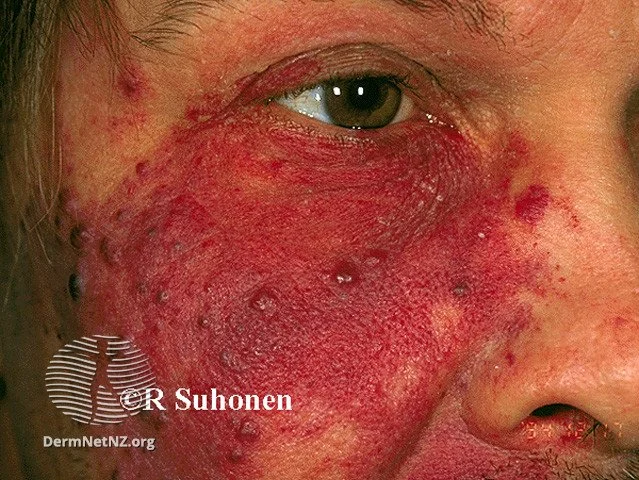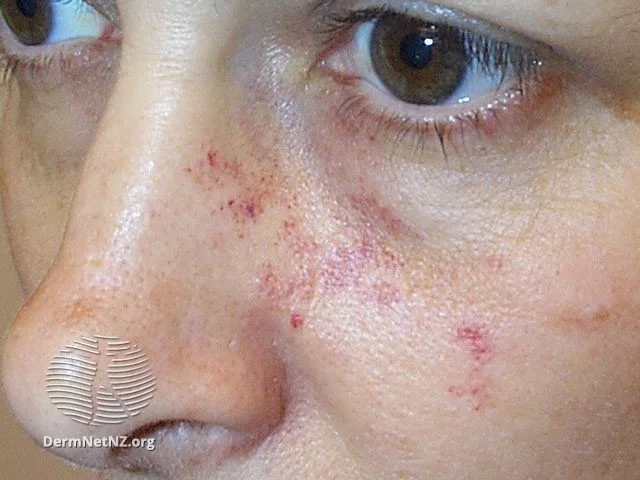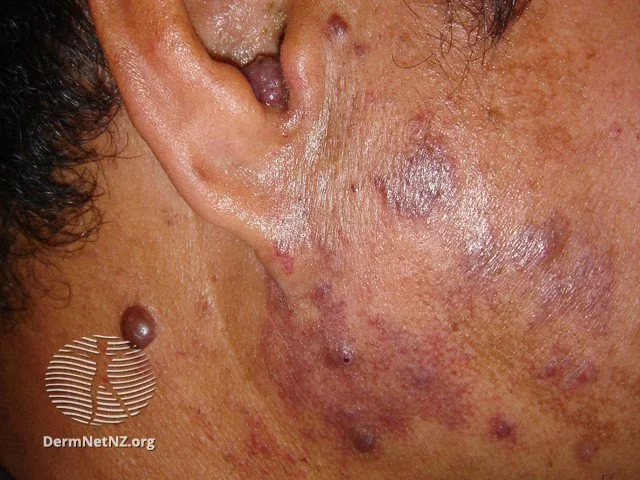
Port-Wine Stain (Nevus Flammeus)
Port-wine stains are capillary malformations often on the face. There can be proliferative nodules as seen here.
Credit: DermNet NZ
What are port wine stains?
Port-wine stains are birthmarks characterized by purple or dark red discolorations on the skin, resulting from a vascular malformation. They are present at birth and their appearance can evolve over one's lifetime, influenced by various factors, including treatment. The name "port-wine stain" is derived from its resemblance to the color of fortified wine from Portugal. Additionally, in some rare instances, these stains might be linked to certain developmental conditions.
What causes port wine stains?
Port-wine stains are primarily caused by specific genetic changes. While the exact genes involved remain under study:
They are almost always inherited.
There's a connection with the dilation of capillaries under the skin, leading to the visible stain.
What are the symptoms of port wine stains?
Port-wine stains manifest as:
Flat areas of purple or dark red skin with well-defined borders.
A surface that may begin lighter in hue at birth but can darken or become bumpy with age.
Predominant appearance on one side of the body, without crossing the midline.
Notably:
The face is the most commonly affected area, but the neck, upper torso, arms, and legs can also be involved.
The aesthetic aspect of the stain can be distressing, potentially impacting psychological well-being, especially in children.
How do I treat port wine stains?
While it's not absolutely mandatory to treat port-wine stains, many opt for intervention primarily for cosmetic reasons. If the stain is located near the eyes or mouth, it could lead to complications if the lesion thickens over time.
Treatment includes:
Parents often choose to begin treatment for their children before the age of 1 to reduce prominence by school age.
The primary treatment choice is laser therapy, particularly the pulsed dye laser.
Multiple treatment sessions might be necessary to achieve desired results.
In some cases, topical rapamycin is considered.
A mild capillary malformation. Not all capillary malformations develop as port wine stains.
Credit: DermNet NZ
Sometimes the port-wine stains will develop proliferative nodules which can be removed if needed.
Credit: DermNet NZ



